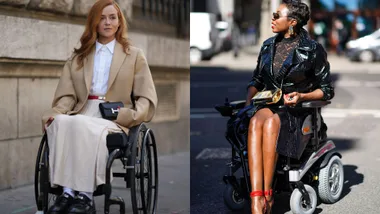In what feels like a true victory for anyone who’s ever waited in a torturously long bathroom line, Australia is officially rethinking the restroom ratio for women.
The Australian Building Codes Board (ABCB), which sets the National Construction Code for public facilities, is backing a new proposal to significantly boost the number of female toilets in public venues, tackling what’s been a “well-known issue” for decades, according to the board. This long-awaited push is, at its heart, a fight for basic comfort and is set to double the number of women’s restrooms in some public venues.
The change stems from well-known truths about restroom needs, specifically the fact that women make up over half the population and visit the restroom 1.3 times more frequently than men, according to a recent report by the ABCB. Not to mention women tend to spend longer in the restroom than men, largely due to the nature of menstruation, pregnancy and the fact that there is no urinal equivalent for women. Yet, outdated standards still see men’s facilities taking up more space, making women a staggering 34 times more likely to end up in a line.
“The net number of toilets provided for women is smaller than that for men. This can be attributed to the more efficient spacing of urinals in bathrooms. Overall, an average toilet area can accommodate from 20 to 30 per cent more fixtures [urinals and toilets] for men than for women,” states the National Construction Code.
The new guidelines not only hope to make public outings for women generally more comfortable, but to address the fact that women make up 80 per cent of people dealing with incontinence. And still, in places like cinemas and theatres, the current restroom allocation barely shifts in their favour.

The average queues for women and girls in places like theatres and cinemas, where people rush to toilets before and after shows is a whopping 13 minutes during peak periods, compared with 9 minutes for men and boys. Apparently, our bladders are unwitting performers too, holding out for the relief of a shorter line.
Yet, like any good drama, the wait drags on and on with the current code allowing for only 1.25 female toilets for every male toilet. ABCB’s proposal will increase that ratio to 1.8 women’s toilets per male toilet, helping to bring queuing times down.
In line with the rising demand for equality across sectors, this move also aims to support inclusivity, which is well overdue. Particularly for mothers, pregnant women, and older women, who often face physical challenges when restroom access is limited. A more balanced ratio can mean the difference between enjoying a public outing and spending it waiting uncomfortably in the queue.
These proposed changes are only one part of a broader plan to create more equitable and user-friendly public spaces. However, the ABCB stresses that this restroom reallocation alone won’t eliminate queuing entirely, but for now, it’s a significant leap toward a fairer, more comfortable future for women across Australia.
So, here’s to a little justice in the restroom queue.


